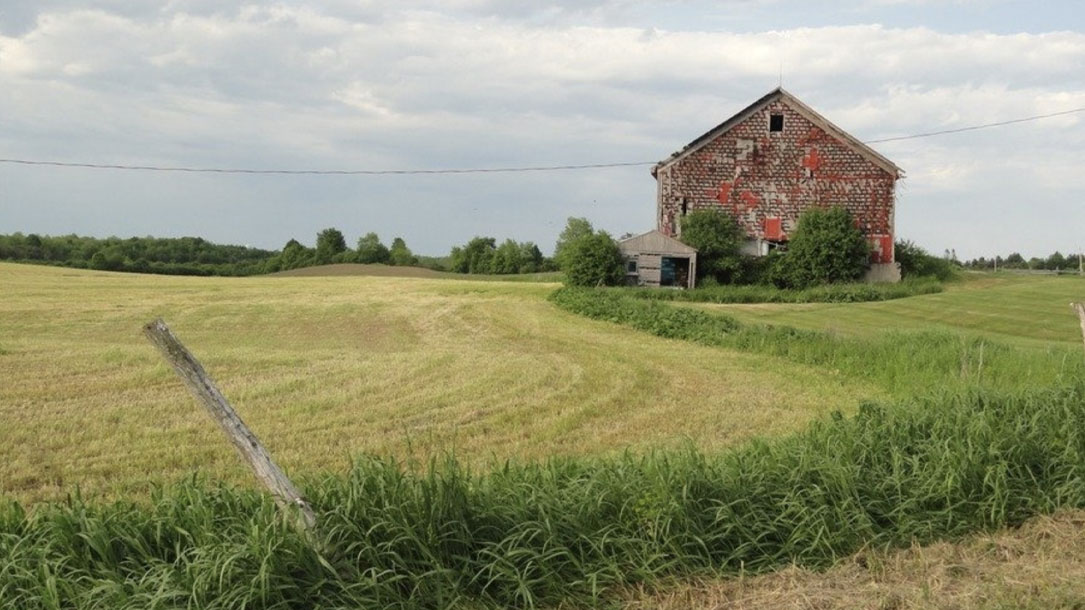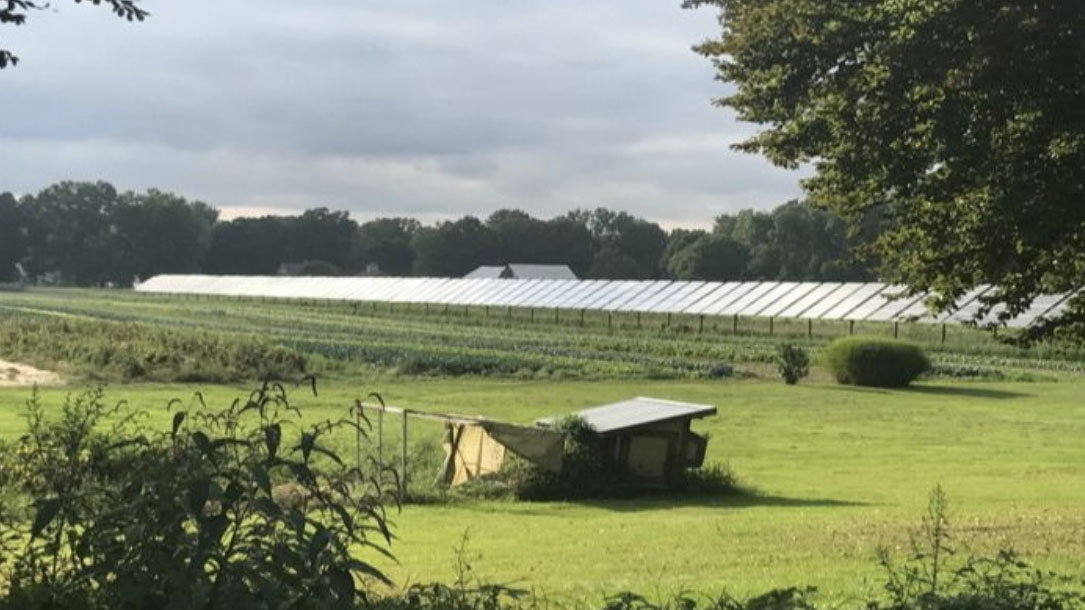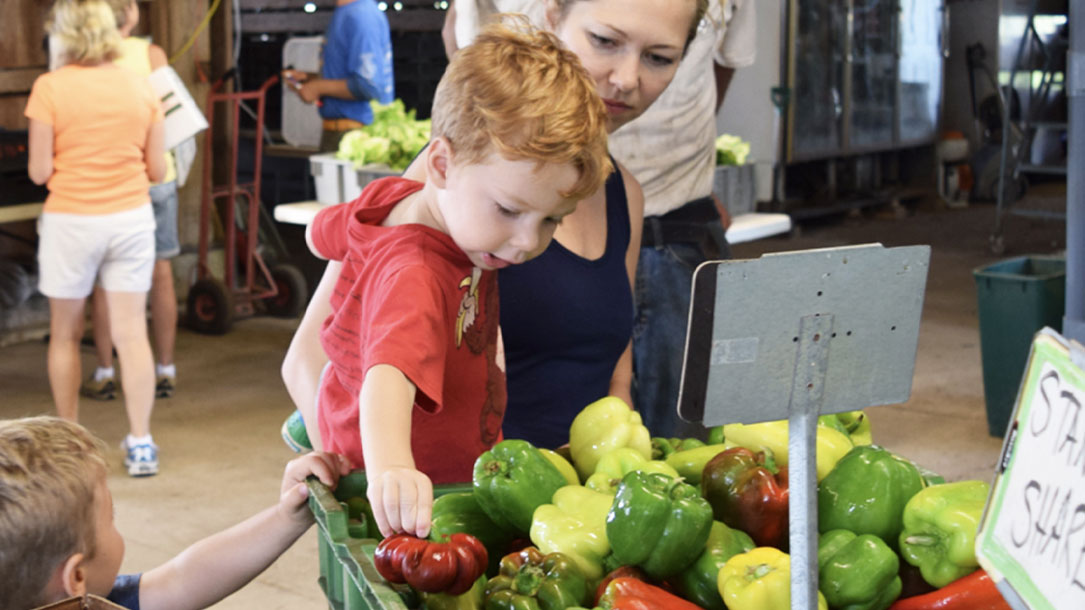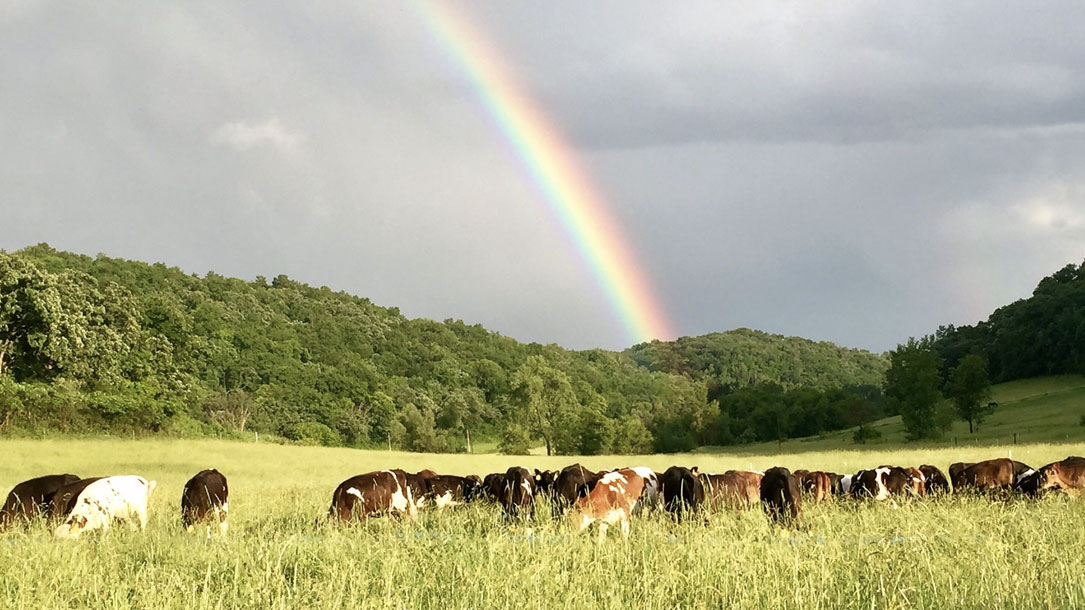
Farms under threat
Farms Under Threat is AFT’s multi-year effort to advance cutting-edge solutions for farmland protection. We use high-resolution spatial analysis tools to identify exactly where agricultural land has been converted to urban and low-density residential land uses, and we have done a deep analysis of every state’s policies for protecting farmland and ranchland, promoting agricultural viability, and helping transfer land to the next generation of farmers and ranchers.

Farmland and Compatible Solar Webinar Series
Farmland is a critical resource in our country, particularly in areas that are heavily forested or developed. American Farmland Trust recently released the Farms Under Threat report, documenting those challenges.
Yet climate change is the most significant threat to conservation we have ever faced. Rather than remove forests, many are locating solar fields on agricultural lands. Can it be done well? Yes.
Find out how in this webinar series focusing on smart solar siting, balancing solar siting with conservation, growing the solar market, and turning state and local priorities into sound policy. While this is focused on New England, there will be many transferable concepts for wherever you are located.
Webinars are free and running on September 23, September 30, October 7, and October 15.

Evidence for declining forest resilience to wildfires under climate change
Kerry Kemp, a forest ecologist for the Oregon Nature Conservancy, studies forest resiliency, or the ability of forests to come back after wildfire or other major disturbances. For new trees to grow in the forest, living ones must be nearby to act as seed sources. And then once those seeds start growing, they’re more susceptible to drought than established trees. “The resilience of these forests is likely to be lower when there’s a mismatch between the current climate and the climate niche for tree regeneration,” Kemp said. “As the climate changes, a given location may no longer be capable of supporting tree regrowth the way it could when temperatures were lower and weather patterns were different. In some parts of the West, it’s already happening,” she said.

Smart Solar Siting partnership project for New England
American Farmland Trust’s Smart Solar Siting Partnership Project for New England started as a two-year effort to build an influential, ongoing, multi-stakeholder coalition supporting recommendations that advance smart solar siting policies and programs in New England states. This is a joint effort to accelerate the expansion of renewable solar energy facilities while maintaining New England’s most productive, resilient farmland and forest land and strengthening its regional food systems.
Check out their program and resources. Your land trust and community may be able to model a similar approach.

Green Earth Harvest
The Conservation Foundation’s Green Earth Harvest program is devoted to healthy soil, healthy vegetables, healthy people, and healthy communities. Our Green Earth Harvest farm crew works tirelessly to sustainably farm the agricultural land at our McDonald Farm headquarters in Naperville and produce healthy organic vegetables for the community…

Four ways land conservation mitigates the impact of climate change
This land trust is working to conserve land using a number of different strategies. They own farmland, wildlife habitat, and hold conservation easements. They run educational programs and own a farm (offering food to the community). Their reach is wide—and they are adapting and responding to calls for greater impact and the need to slow down climate change.
Check out this blog post as an example of how you could help your community see the importance of land conservation as part of the solution…

Strategies for Mitigating Climate Change with Natural and Working Lands – A Policy Analysis and Playbook
“Wisconsin’s more than 33 million acres of forests, farms, and conservation lands cover more than 92% of our state. They play a critical role in absorbing and offsetting carbon dioxide (CO2) and other greenhouse gas emissions that are the primary cause of climate change.
Together, these “Natural and Working Lands” are a highly productive resource, contributing farm and forest products to our economy, providing recreation opportunities and a high quality of life, and quietly but effectively offsetting CO2 emissions.”

New report: “Strategies for Mitigating Climate Change with Natural and Working Lands”
Wisconsin’s more than 33 million acres of forests, farms, and conservation lands cover over 92% of the state. They play a critical role in absorbing and offsetting carbon dioxide (CO2) and other greenhouse gas emissions that are the primary cause of climate change. Together, these “Natural and Working Lands” are a highly productive resource, contributing farm and forest products to [the] economy, providing recreation opportunities and a high quality of life, and quietly but effectively offsetting CO2 emissions.
Natural and Working Lands make a significant contribution to cleaner air and reduced warming, with large benefits for soil, water, and people. By managing [the] Natural and Working Lands effectively, Wisconsin could offset an additional 16 million tons of CO2 each year—equal to 20% of our annual net greenhouse gas (GG) emissions.
See the full report “Strategies for Mitigating Climate Change with Natural and Working Lands” here.

It’s time for businesses to aim higher. Here’s one way to do it—natural climate solutions
Corporations are (rightly) first focused on reducing their emissions. That’s absolutely where they need to start, and it should be their highest climate-related priority. Thanks to pressure by activists, customers, shareholders and employees, companies are now taking action. They’re not waiting for government regulations mandating them to do so. They’re doing what they can to reduce their carbon emissions by using less energy and switching to renewables.
And when they can’t reduce further, they are now also committing to purchase large volumes of offsets to reach carbon neutrality. Some companies go even further and aim to reach net negative.
This is where NCS enters the picture…

Climate change and community impact
Climate communication 101 involves meeting people where they are, connecting with that they see, and finding ways for people to participate in the climate solution in a manner that also adds value to their lives.
Maine Audubon has done just that with its Climate Spotlight series. Audubon’s research has documented that if left unchecked climate change will cause the loss of millions of birds. They’re playing a leadership role and helping to frame the issue:
“Climate change is the biggest environmental issue facing Maine, and we’re not backing down. Maine Audubon’s new Climate Spotlight series is aimed at giving consumers and advocates the information they need to take action and understand how climate change impacts Maine. Topics in this free online discussion series include: getting involved in rooftop and community solar; natural climate solutions; transportation; and home energy efficiency.”
Check it out, and see if this is something you could create in your community.












